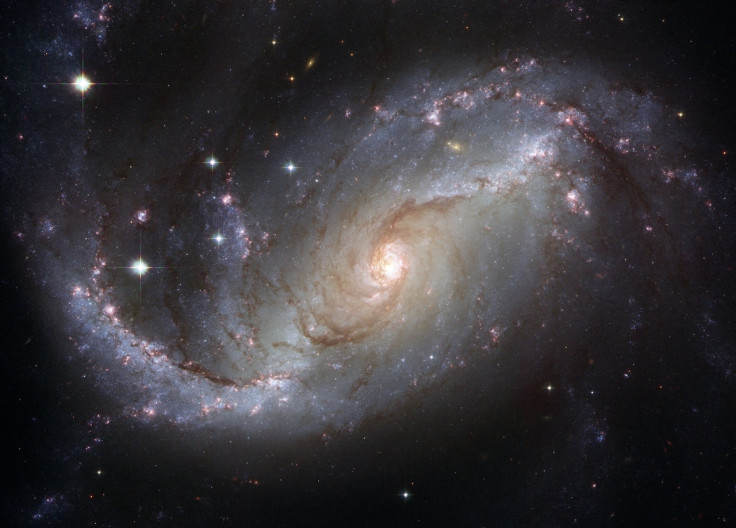UK Invests £7.4 Million in Global Space Exploration Projects
The Space Science and Exploration Bilateral Programme will facilitate collaborations between British universities and international space agencies.

In a bid to advance global space exploration initiatives, the United Kingdom has announced a substantial investment of £7.4 million into various projects aimed at unravelling the mysteries of the cosmos, a release by the government itself stated.
The Space Science and Exploration Bilateral Programme, unveiled by the UK government, is poised to facilitate groundbreaking collaborations between British universities and prominent international space agencies.
Among the notable ventures is Royal Holloway's pioneering effort to develop software for the Indian Space Agency (ISRO) Chandrayaan-2 orbiter. This software aims to enable the detection of ice beneath the surface of the lunar south pole, a crucial step in advancing our understanding of lunar resources.
In a parallel endeavour, the University of Leicester will spearhead a project focused on crafting a Raman spectroscopy instrument for iSpace's commercial rover and lander missions. This instrument holds the key to investigating water ice on the Moon, potentially laying the groundwork for sustained lunar exploration endeavours.
Additionally, esteemed institutions such as the Open University, the universities of Sussex, Aberdeen, and Cambridge are set to collaborate with global space heavyweights including NASA, the Canadian Space Agency (CSA) and the Japan Aerospace Exploration Agency (JAXA) on diverse initiatives under this program.
The announcement comes in conjunction with the ongoing Global Space and Technology Convention (GSTC) in Singapore, where the international space community converges to explore burgeoning opportunities in the sector.
Andrew Griffith MP, Minister for Space at the Department for Science, Innovation and Technology, hailed the investment as a significant stride in pushing the boundaries of space discovery.
Griffith said: "From exploring water on Mars and the possibility of sustained human activity on the red planet, to how galaxies evolved over time, our more than £7 million investment is pushing the boundaries of space discovery and putting the UK at the heart of some of the most important global space missions.
"With top UK universities from Sussex to Aberdeen leading these groundbreaking endeavours, our country is at the heart of exploring beyond our planet, working with partners in Japan, India, North America and around the world and growing our economies."
Dr Paul Bate, Chief Executive of the UK Space Agency, echoed Griffith's sentiments and stressed the transformative potential of these projects in deepening the understanding of celestial bodies and catalysing international investment in the UK space sector.
Bate said: "This funding, which builds on previous early-stage awards, will help catalyse international investment into the UK space sector and highlights the value we place on sharing knowledge and expertise with our counterparts overseas to break the boundaries of space exploration.
"The Global Space and Technology Convention in Singapore is the ideal setting to share this news and showcase the benefits of expanding our work with global partners."
Marie-Claire Perkinson, Chair of the Space, Science and Exploration Committee at UKspace, lauded the collaborative nature of the initiative, highlighting its potential to foster future industrial collaboration and bolster the UK's standing in the global space community.
Rerkison said: "The UKSpace Space Science and Exploration Committee welcome this opportunity for academic contributions to the bi-lateral programme in support of global agencies. Developing strong relationships through these projects is a key step toward future industrial collaboration."
The projects, which have already received an initial funding round totalling £400,000, have been listed below.
Notable projects include Royal Holloway's software development for the Indian Space Agency (ISRO) Chandrayaan-2 orbiter to detect ice on the lunar south pole, along with the Shukrayaan mission, targeting the analysis of Venus' surface. This endeavour receives £306,000 and focuses on processing multi-band radar data and developing analysis software.
The University of Leicester will lead the Star-X project, in collaboration with NASA, receiving £650,000. This initiative aims to produce high-level science data products for the study of Universe formation using the time-domain method and "multi-messenger" astrophysics.
The FIR missions project, led by the University of Sussex in partnership with NASA, receives £1.1 million. It aims to provide superconducting detectors, detector systems, optics, filters and data pipelines for potential probe missions investigating the formation of planetary systems and the evolution of galaxies.
The University of Aberdeen's HABIT project, in collaboration with JAXA, Japan, receives £320,000. This initiative aims to provide instrument monitoring air and ground temperature, wind, humidity, and hydration state of salts, for a Mars rover/lander studying the water cycle, chemistry, and habitability.
The Open University's I-MIM project, in partnership with CSA, Canada, receives £2 million. This endeavour focuses on developing high-performance detectors for the Mars multispectral and stereo imager for the International Mars Ice Mapper mission, aiming to map accessible water ice deposits on the Martian surface.
The Lunar Spectroscopy project, led by the University of Leicester in collaboration with iSpace, Japan, receives £1.5 million. This initiative will lead the development of the Raman analytical spectroscopy instrument for commercial small lunar landers and rovers exploring the lunar surface for space resource utilisation.
Lastly, the CosmoCube project, led by the University of Cambridge in collaboration with NASA, receives £1.5 million. This project aims to lead the project, payload and science, mission and space platform for a cube-sat that will deploy a precision radiometer to measure spectral distortions in the Universe's cosmic microwave background.
© Copyright IBTimes 2025. All rights reserved.






















